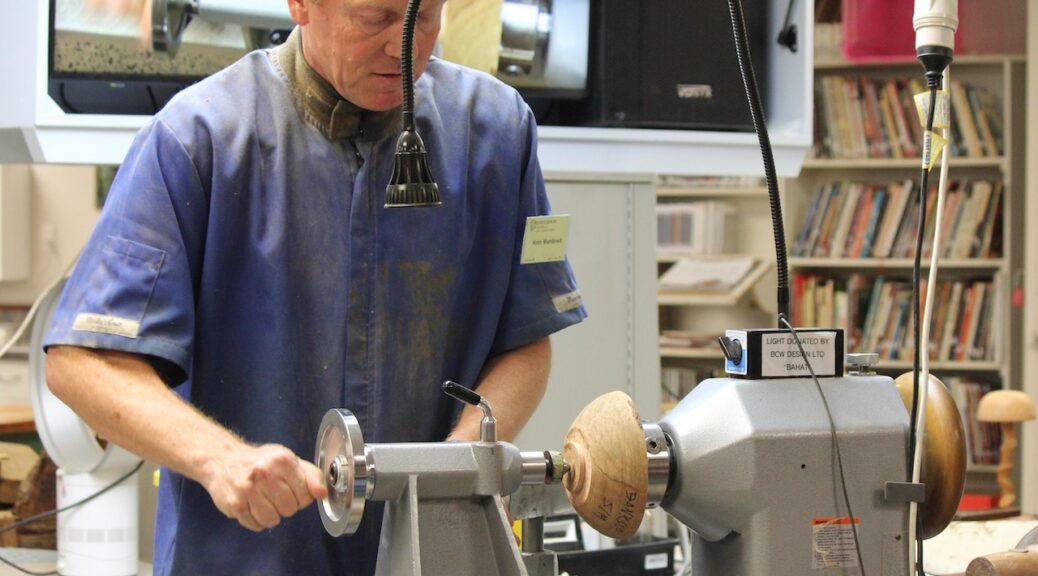Club Meeting 3 Feb 2021
Report by Janet McDonald
Holm gave a great demo on ebonising. The practice of turning wood black/darker without paint or pyrography. He showed how the tannic acid in wood reacts to different types of formulas/solutions. One of the main benefits of using ebonising is that it darkens the wood but allows the grain of the wood to show through.
The most common formula is a mixture of white vinegar and steel wool left to soak for a few days or weeks. Recipe: 1 cup of vinegar and a hand full of steel wool. The longer left the darker with solution will be on the wood. Because of the gasses/pressure formed while fermenting, it is best to place in a glass jar with a loose lid to allow build up of pressure to release itself.
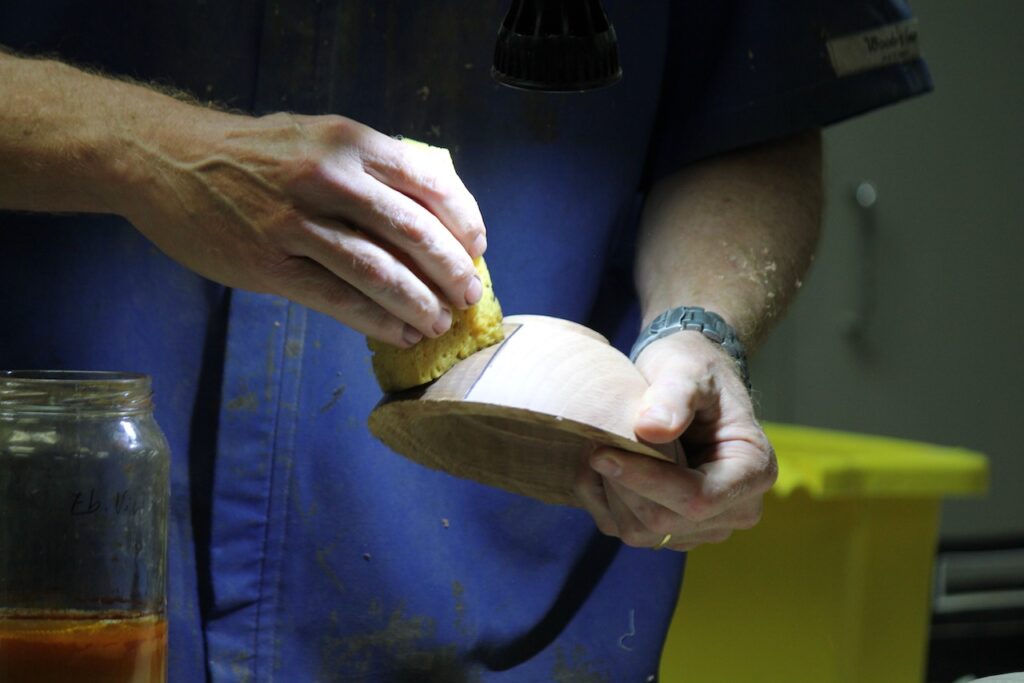
Once the formula is ready it can be applied to your wood object with a brush or a sponge. The more layers of solution the darker the look. Some wood has more tannic acid than others, so the depth of colour from one formula may vary on different types of wood.
Tea leaves soaked in water can be applied to the wood to add tannic acid to the wood so that it reacts with the vinegar solution.
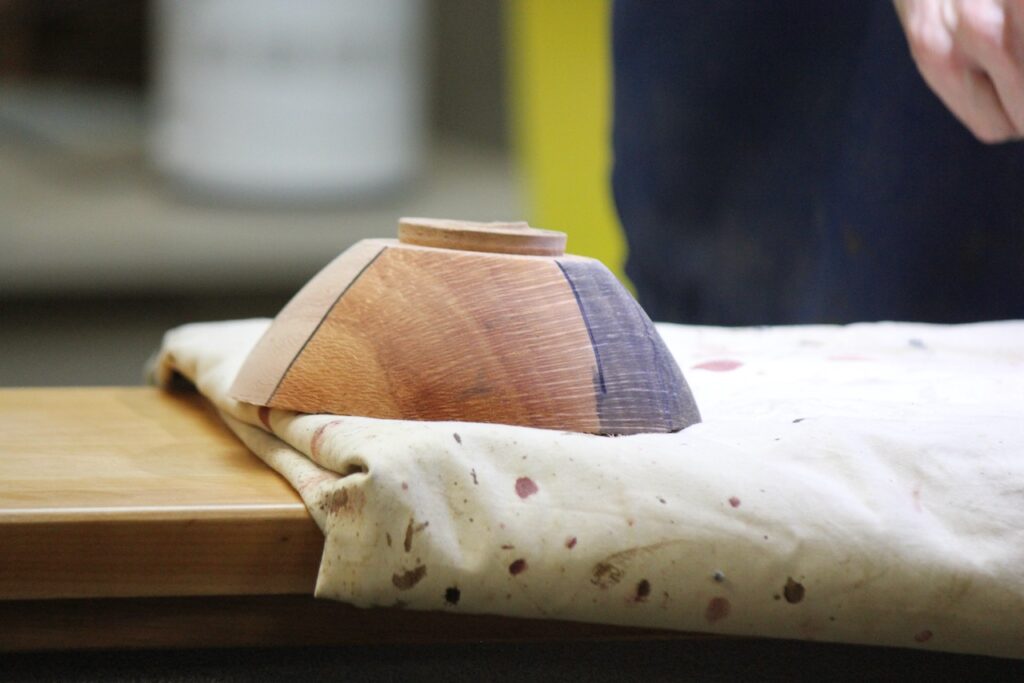
The solution can raise the grain of the wood surface, so it was suggested to sponge on a layer and allow to dry. Then sand any raised grain and then apply another layer of solution. Do not use sanding sealer or similar on wood first or it will impede the soaking of the solution.
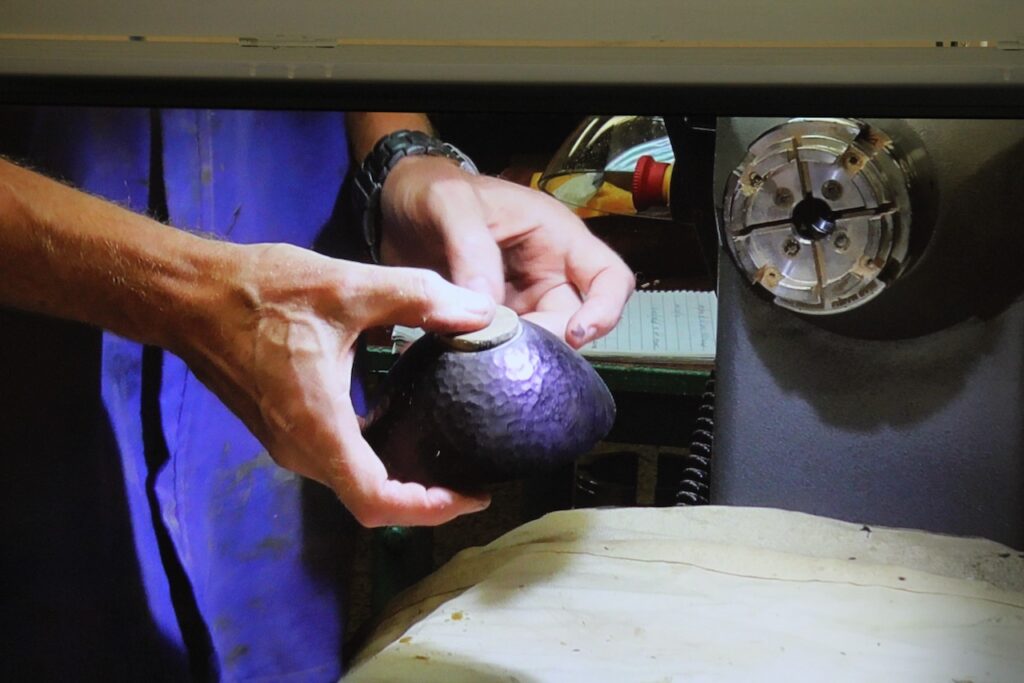
Holm also showed us how indian ink and leather dye can be used on wood to colour it.
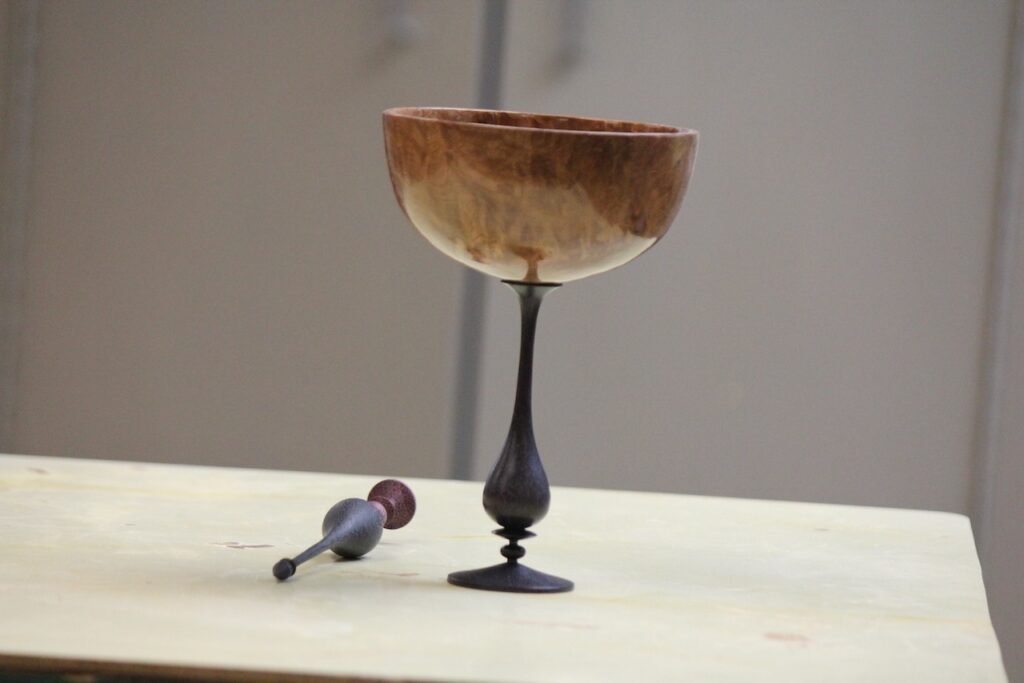
Holm showed many examples on pieces of wood during the demo which was appreciated.
